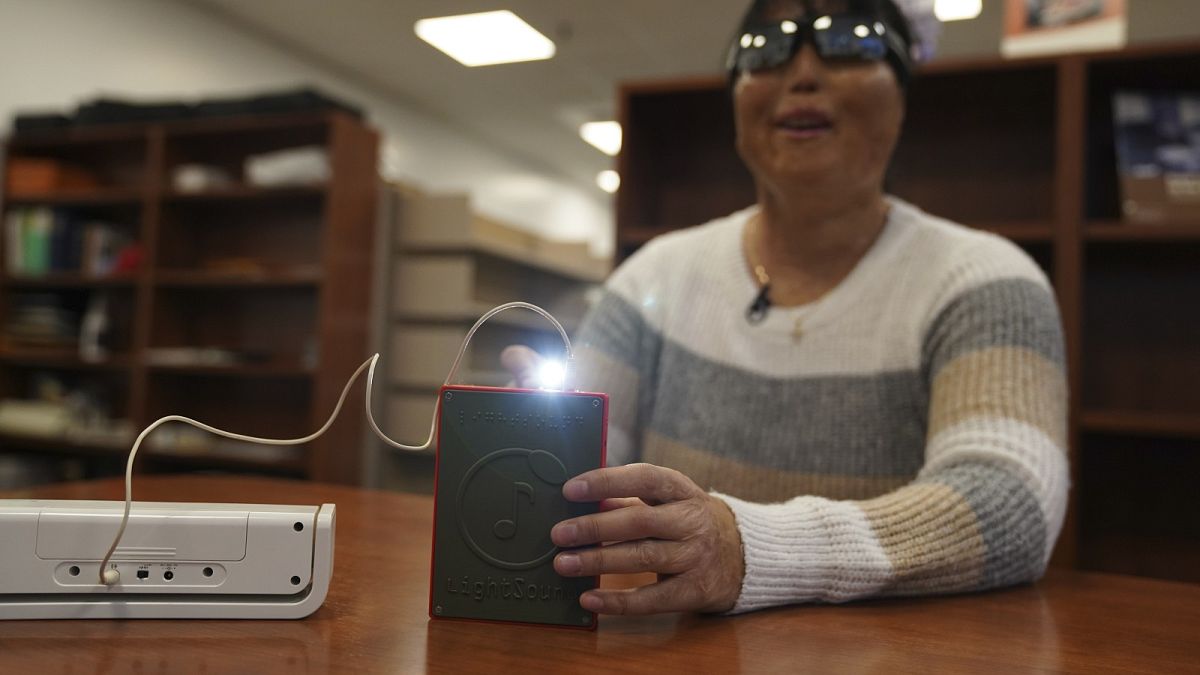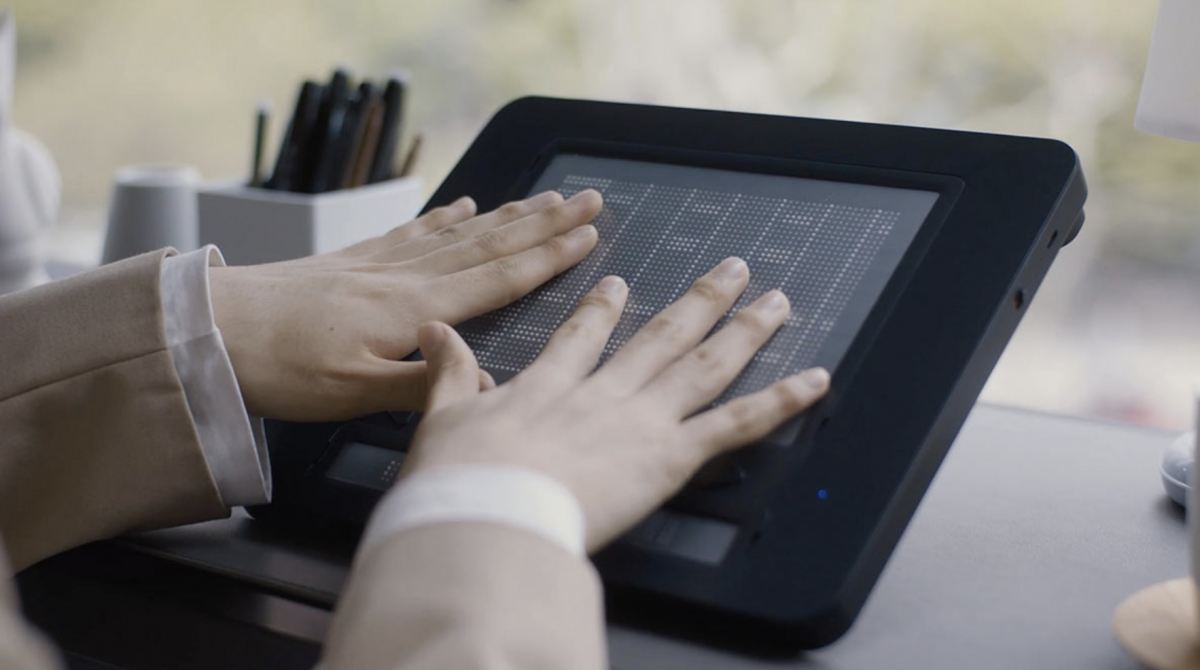Braille Displays and Notetakers: Essential Tools for Learning and Work
A Guide to Life-altering Assistive Innovation for the Blind and Visually Damaged
The improvement of assistive technology has actually ushered in a transformative age for individuals who are visually damaged or blind, offering devices that enhance freedom and improve daily experiences. Technologies such as clever navigation gadgets and AI-driven applications are redefining just how users interact with their environments, while obtainable reading solutions and clever home innovations assure to more raise the quality of life.
Smart Navigation Devices
Smart navigating tools are changing the way individuals who are blind or aesthetically impaired connect with their atmosphere. These advanced innovations, which incorporate general practitioners, audio comments, and haptic signals, give customers with critical details concerning their surroundings, improving their independence and movement.
One noticeable example is making use of clever walking canes equipped with sensors that identify challenges and offer real-time responses via vibrations or audio cues. These tools allow individuals to navigate complex settings, such as hectic roads or crowded public spaces, with raised confidence. Furthermore, wearable gadgets, such as wise glasses, are being established to help in acknowledging faces, checking out message, and identifying items, even more boosting the user's spatial awareness.
Moreover, smart navigating devices are significantly including man-made knowledge to assess information and adapt to users' choices. This personalized approach not just enhances navigating effectiveness however also fosters a sense of empowerment amongst users. As innovation continues to advancement, the possibility for clever navigation devices to create a more inclusive and available globe for people who are blind or aesthetically impaired stays appealing, inevitably reshaping their everyday experiences and communications.
Cutting-edge Mobile Applications
Mobile applications are becoming effective devices for helping individuals who are blind or aesthetically impaired, providing a series of functionalities that boost daily living. These applications harness progressed technology to facilitate everyday jobs, enhance availability, and advertise self-reliance.
One group of innovative mobile applications concentrates on aesthetic recognition. Applications like Be My Eyes connect users with sighted volunteers using video clip calls, making it possible for real-time help for jobs such as checking out labels or navigating unfamiliar atmospheres. In a similar way, apps like Seeing AI use expert system to describe environments, read text, and identify items, supplying users with important details at their fingertips.
One more considerable location is navigating and orientation. Apps such as Aira and Nearby Traveler give audio assistance, helping customers browse city spaces effortlessly. They supply tailored assistance, enabling a much more certain exploration of the setting.
In addition, health and wellness and wellness apps satisfy particular requirements, such as drug management and physical fitness tracking. These applications intend to cultivate an alternative approach to wellness, making certain that users can preserve their health and wellness individually.
Wearable Assistive Devices
Wearable assistive tools represent a significant improvement in innovation created to support people that are blind or visually damaged. These devices boost flexibility and self-reliance by giving real-time comments concerning the surrounding setting. Amongst the most remarkable wearable innovations are clever glasses geared up with cams and sensing units, which can identify barriers and relay critical information with sound hints.

Another innovative option consists of wrist-worn vision care near me tools that utilize ultrasonic waves to find barriers and give navigational support. These tools frequently come with customizable settings, enabling customers to tailor the alerts to their particular requirements.
The assimilation of expert system in wearable assistive modern technology is additionally noteworthy, as it continually improves the accuracy and responsiveness of these gadgets. Overall, wearable assistive tools are changing the lives of the aesthetically impaired and blind, fostering higher freedom and boosting lifestyle through cutting-edge remedies.
Obtainable Reading Solutions
Available analysis solutions play an important function in enabling individuals who are blind or visually impaired to engage with message across different styles. These options encompass a variety of devices and technologies created to boost reading experiences, from conventional print materials to electronic material.
One noticeable service is Optical Character Acknowledgment (OPTICAL CHARACTER RECOGNITION) innovation, which transforms published message right into electronic format, permitting users to pay attention to or read the web content utilizing screen visitors. In addition, specialized e-readers furnished with text-to-speech capacities use personalized analysis experiences, making it possible for individuals to readjust font sizes and history shades for improved visibility.
One more efficient approach is braille screens, which give responsive feedback by transforming digital text into braille. This permits individuals to check out via touch, promoting greater freedom and access to literary works. In addition, mobile applications designed view it now for reviewing scanned records or publications can equip customers with immediate access to a large library of materials.

Smart Home Technologies
Smart home innovations have reinvented the method people who are blind or visually impaired connect with their living settings, improving both freedom and safety. These innovative services take advantage of automation and connection to produce an easily accessible living space customized to the demands of users.
Smart audio speakers and voice-activated aides offer hands-free control over various gadgets, allowing users to change temperature, illumination, and security steps via simple voice commands. This functionality lessens dependence on sighted help and cultivates a sense of autonomy. Additionally, wise lighting systems can be personalized to deliver acoustic feedback or tactile cues, allowing individuals to browse their homes better.
Additionally, safety and security systems outfitted with clever cameras and sensing units can send real-time alerts to users, enhancing individual security without necessitating visual verification. Automated door locks use satisfaction, permitting users to secure their homes easily.
Incorporating clever home modern technologies not only boosts daily living but additionally encourages social communication with connected devices - OCR devices for the try this web-site blind. With ongoing improvements in assistive innovation, the future shows up promising, as more services will certainly emerge to more encourage individuals that are visually damaged or blind, ensuring a much more independent and comprehensive lifestyle
Final Thought
In final thought, the developments in assistive technology for the blind and visually damaged represent a significant jump toward enhancing independence and high quality of life. Smart navigation devices, cutting-edge mobile applications, wearable tools, available analysis services, and clever home technologies jointly cultivate a comprehensive environment. This combination of technology not just boosts wheelchair and day-to-day living but additionally encourages individuals to engage fully with their environments, promoting higher freedom and involvement in culture.
Advancements such as smart navigating gadgets and AI-driven applications are redefining exactly how users interact with their environments, while available reading options and smart home technologies guarantee to additional elevate the quality of life. As innovation proceeds to breakthrough, the potential for clever navigation devices to develop a much more inclusive and obtainable world for people who are blind or visually damaged continues to be appealing, eventually improving their everyday experiences and interactions.
Wearable assistive devices represent a substantial innovation in technology developed to sustain people that are blind or aesthetically damaged. Amongst the most noteworthy wearable modern technologies are clever glasses equipped with sensing units and video cameras, which can identify obstacles and relay vital info through audio signs.
Smart navigating tools, ingenious mobile applications, wearable gadgets, available reading options, and wise home technologies jointly cultivate an inclusive atmosphere.